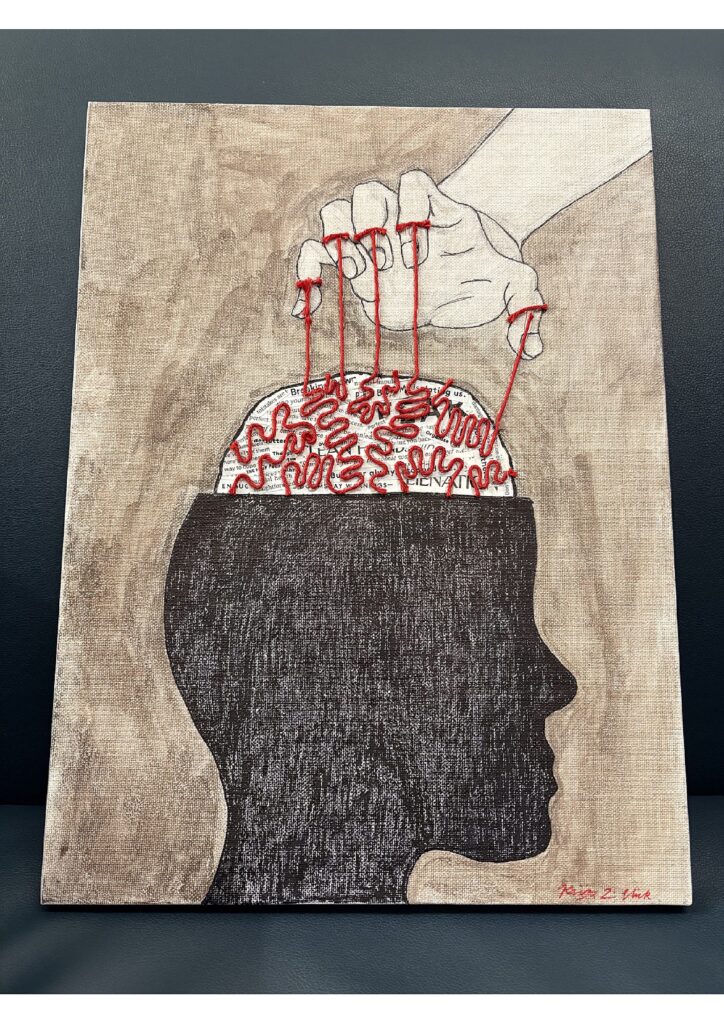
Obsessive compulsive disorder, or OCD, is commonly misunderstood and misrepresented in the media. OCD will often be portrayed superficially as an extreme fear of germs, excessive hand washing, and/or obsessive perfectionism. In reality, OCD encompasses those behaviors and so much more. OCD is a common, chronic mental disorder that causes persistent and repetitive obsessions and/or compulsions in those that have it. Obsessions are intrusive thoughts, images or impulses which are anxiety-inducing and cannot be easily suppressed (Stein et al., 2019). Compulsions are repetitive mental acts or behaviors which individuals are compelled to complete in order to fulfill an obsession or a self-imposed set of rules (Abramowitz et al., 2009). Obsessions are often linked with compulsions and the two components of OCD feed off of each other, creating a loop of unwanted thoughts and behaviors. Individuals with OCD will often be aware that their behaviors and thoughts are extreme and want to exert control over them, yet lack the ability to do so which creates stress. Onset of OCD is common in late adolescence, and lasts for a long time (Stein et al., 2019).
I chose to cover the objective “explain how neurons carry an electrical charge” for my STEAM project on how OCD affects the brain. With OCD, there is not a single root cause which has been decided upon, but research suggests that it is largely caused by different irregularities in brain signaling and/or chemicals. There are disconnects in the nerve connections in the brain and insufficient neural links between the brain systems which recognize errors and actually respond to errors. People with OCD recognize the errors are happening, but are unable to do anything to stop them (Gavin, 2018). Since OCD is based in over-doubting and repetitive actions, it is likely that the orbitofrontal cortex and dorsolateral prefrontal cortex are involved in inhibiting responses as well as inhibiting planning and verification of completion of past actions. There have been white and gray matter irregularities found in the frontal regions of the brain in those with OCD, which supports the idea that the frontal brain region is dysregulated (Abramowitz et al., 2009) (Barahona-Corrêa et al., 2015). The basal ganglia has also been found to be one of the brain structures affecting OCD, with the disruption of the pathways between the orbitofrontal cortex, basal ganglia and thalamus being a contributing factor to OCD (Abramowitz et al., 2009).
OCD has also been connected to disruptions with the serotonin and dopamine systems in the brain. People with OCD may have dysfunctions with receiving serotonin, as well as possibly dopamine (Abramowitz et al., 2009). Serotonin reuptake inhibitors, which increase serotonin received in the synapses, have been found somewhat successful in treating OCD symptoms but it is not likely that a lack of serotonin is the cause of OCD. Other neurotransmitters could factor into OCD, such as the glutamate neurotransmitter. With OCD, it is believed that corticostriatal pathways are overactive (as mentioned above), and along with that it’s possible that those with OCD have an increased amount of glutamate and changes in glutamate transmission at the corticostriatal synapses (Barahona-Corrêa et al., 2015). Other possible causes of OCD include genetic and environmental factors (such as birth complications and/or traumatic events) (Stein et al., 2019).
In conclusion, it is difficult to discern a specific cause for OCD since there could be countless factors that influence its presence, but it can be concluded that OCD is due to irregularities in the brain which lead to the persistent thoughts and behaviors those with the disorder experience. A commonly effective treatment for OCD is cognitive-behavioral therapy, which focuses on exposure (thinking about the anxiety-provoking thoughts and images) and preventing the regular response an individual has (restraining the urge to perform compulsions) in an attempt at reducing stress (Abramowitz et al., 2009).
With my STEAM project collage, I depicted a head with the brain exposed, and a hand above the brain with strings attached to its fingers that seamlessly connected with the folds of the brain. I pasted words and phrases cut out from a magazine inside the brain that I felt reflected how OCD feels to those with the disorder. The hand with the strings is meant to look like it is moving the brain like a puppet, and the strings are meant to be interconnected with the brain. I also chose the only bright color in the collage to be the red strings, so that they are eye-catching. My thinking behind my piece is that people with OCD lack control over their thoughts and behaviors, and cannot stop their brain from having the irregularities which cause OCD, so it feels like their brain is being manipulated by outside sources and they are a puppet.
References
Abramowitz, J. S., Taylor, S., & McKay, D. (2009). Obsessive-compulsive disorder. The Lancet, 374(9688), 491–499. https://doi.org/10.1016/s0140-6736(09)60240-3
Barahona-Corrêa, J. B., Camacho, M., Castro-Rodrigues, P., Costa, R., & Oliveira-Maia, A. J. (2015). From Thought to Action: How the Interplay Between Neuroscience and Phenomenology Changed Our Understanding of Obsessive-Compulsive Disorder. Frontiers in Psychology, 6, 1798. https://doi.org/10.3389/fpsyg.2015.01798
Gavin, K. (2018, November 29). Stuck in a loop “of wrongness”: Brain study shows roots of OCD. Michigan Medicine. https://www.michiganmedicine.org/health-lab/stuck-loop-wrongness-brain-study-shows-roots-ocd
Stein, D. J., Costa, D. L. C., Lochner, C., Miguel, E. C., Reddy, Y. C. J., Shavitt, R. G., van den Heuvel, O. A., & Simpson, H. B. (2019). Obsessive–compulsive disorder. Nature Reviews Disease Primers, 5(1), 52. https://doi.org/10.1038/s41572-019-0102-3
